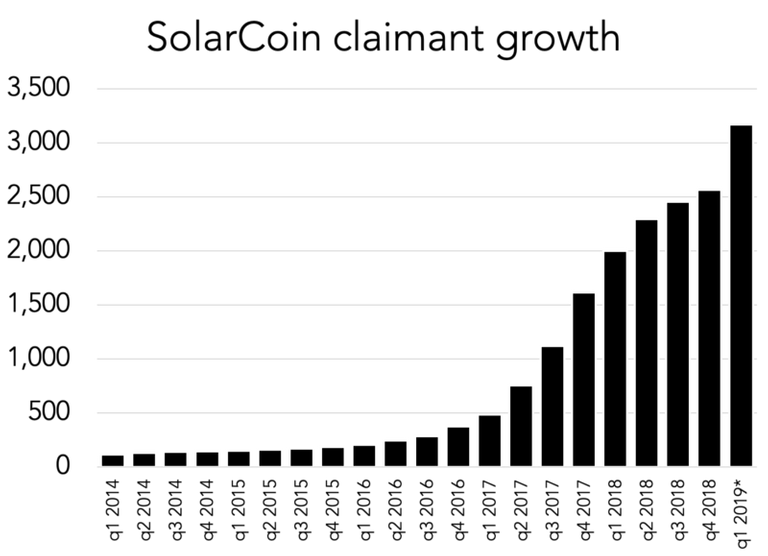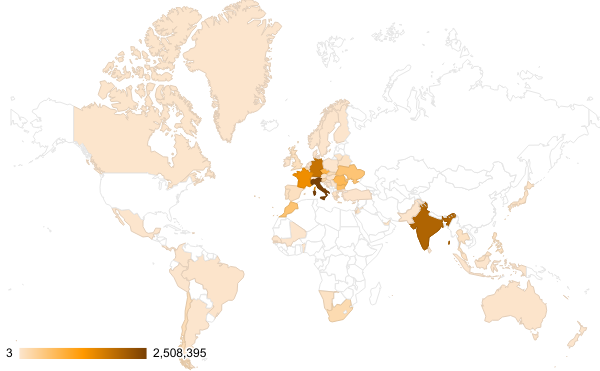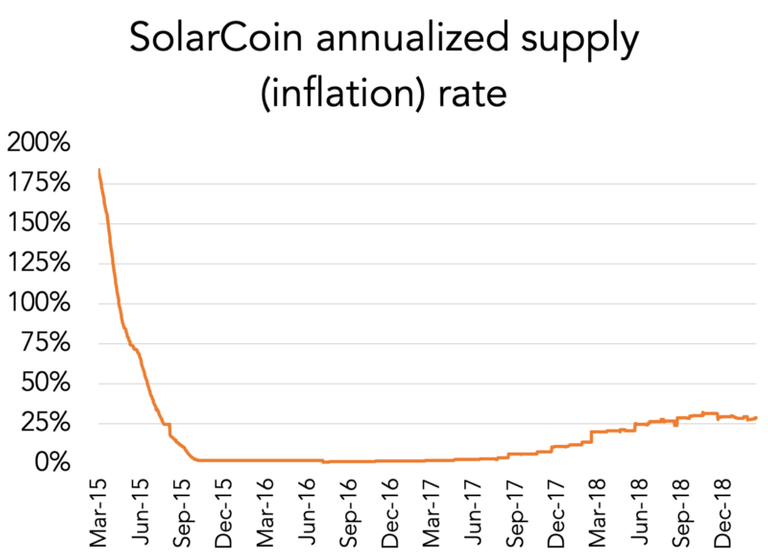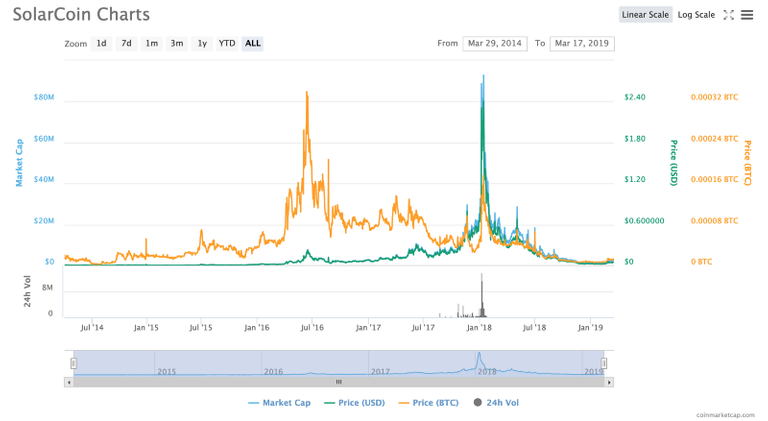Economies are people. Five years ago, when we launched SolarCoin, our economic vision was simple: by growing the number of people claiming their free reward, a useful $10–20 economic incentive for solar energy can emerge. The theory is that currencies are protocols with emergent value. The research presented below appears to bear this out.
Economies can be defined by the currency protocol used for exchange, such as the US dollar economy. Below is a summary of the SolarCoin economy over 5 years.
Currency protocol demand = people
Participants in the SolarCoin economy are mostly solar energy producers who have claimed their SLR, although as an open ecosystem others can buy their way in. Early on, miners were required before the low carbon Proof of Stake algorithm was mature enough for use. While measuring the entire economy is impossible, we can use the number of claimants as a proxy for size. Claimant growth can be tracked in the blockchain.

These figures are from a new reporting system which eliminates duplicate addresses and multiple systems. Note q1 2019 data is from March 15th. The final figure will likely be slightly larger.
3,100 unique SolarCoin participants have claimed §13,505,491 SolarCoin in 73 countries, reflecting 13.5 TWh of energy generated and incentivized. For user uptake context all of the smart contract platforms (Eos, Ethereum, Tron etc.) combined see roughly 90,000 daily users.

How currency protocols work
SolarCoin works like [https://papers.ssrn.com/sol3/papers.cfm?abstract_id=3281845](every other currency). Every person contributes to the value of protocol just by holding, using or recognizing its value even if they received it for free.
Here is what value looks like for traditional currency protocols in a network. Each additional protocol participant supports $500-$15,000 in market cap. Traditional economics refers to this as M0.

Supply
Circulating supply data is taken from the blockchain.


The mix of supply (currency issued into circulation) and demand (new participants) as measured by claimants combine to form the economy. Price from CoinMarketCap tells the rest of the story.

SolarCoin’s $ value/user (node) supports the Network Capitalism’s network protocol theory
From a tiny economy with a few hundred participants to a still small but 10 times larger economy with a few thousand and market capitalization (M0) of $2.5 million, it appears the $/node is in line with the Network Capital theory of currency as a protocol.
Our job at SolarCoin is to add more people generating solar energy and claiming their SLR. We plan to do this primarily through monitoring platforms like SMA Sunny Portal, whose 260,000 users are now starting to sign up. Our goal is to make the next 10x leap in claimants as quickly as possible. Tell your solar energy generating friends to claim their free SolarCoin here.
Note: This is not a recommendation to buy or sell securities. The data being provided has been created on a best efforts basis for accuracy and may be subject to revision.
I have 14 solar coins from my solar panels, I’m going to buy more when I start making a profit from steem. It does good work
Posted using Partiko iOS
Congratulations @solarcoin! You have completed the following achievement on the Steem blockchain and have been rewarded with new badge(s) :
You can view your badges on your Steem Board and compare to others on the Steem Ranking
If you no longer want to receive notifications, reply to this comment with the word
STOPTo support your work, I also upvoted your post!
Do not miss the last post from @steemitboard:
Vote for @Steemitboard as a witness to get one more award and increased upvotes!
Congratulations @solarcoin! You received a personal award!
You can view your badges on your Steem Board and compare to others on the Steem Ranking
Vote for @Steemitboard as a witness to get one more award and increased upvotes!